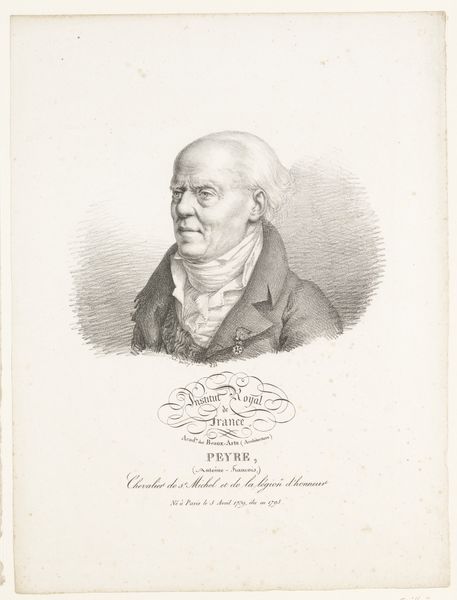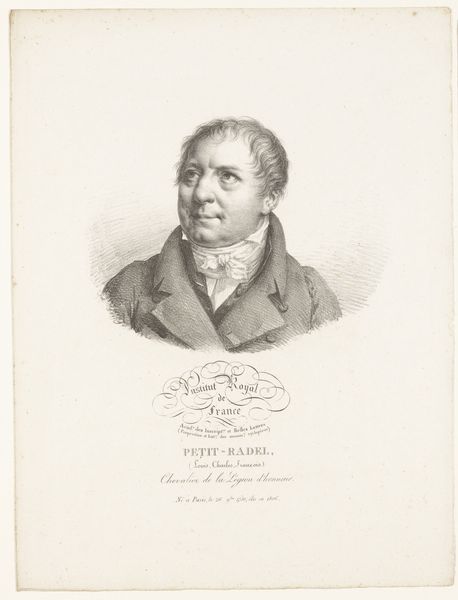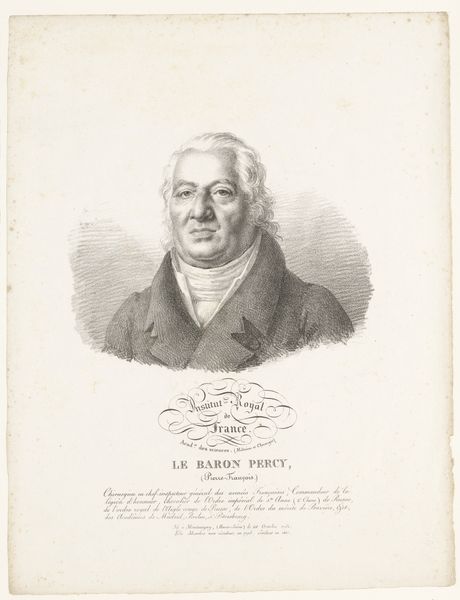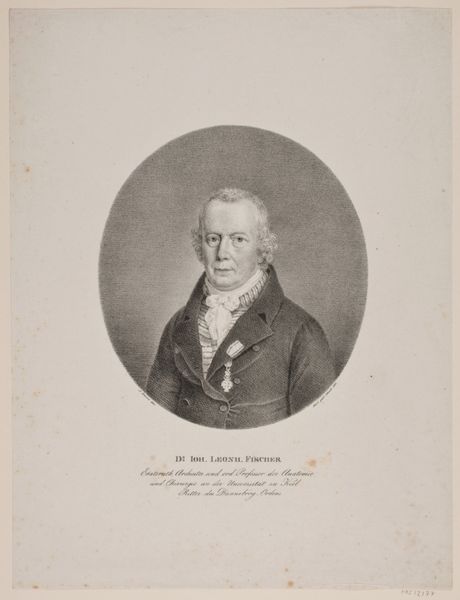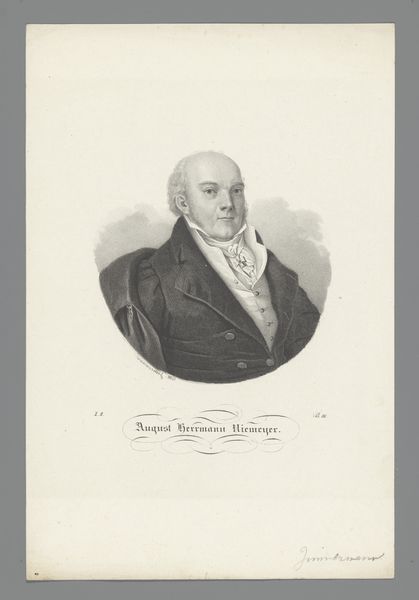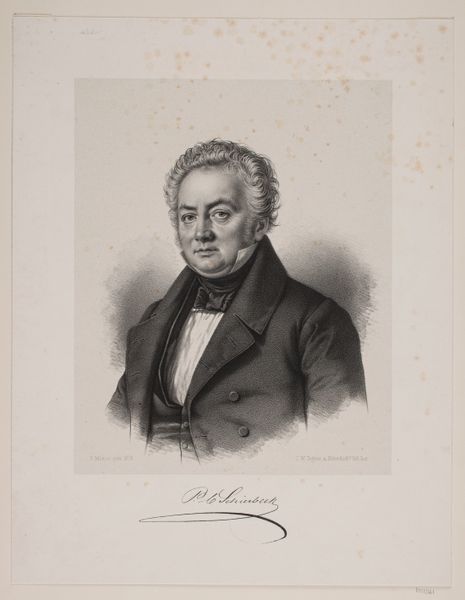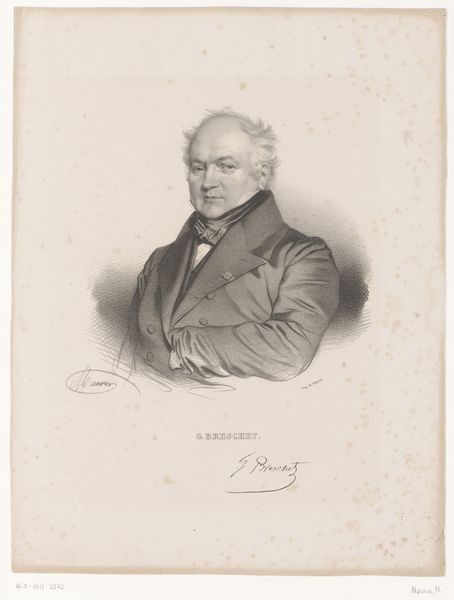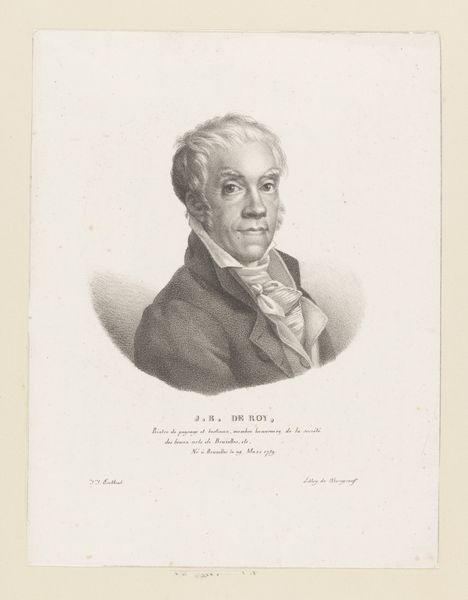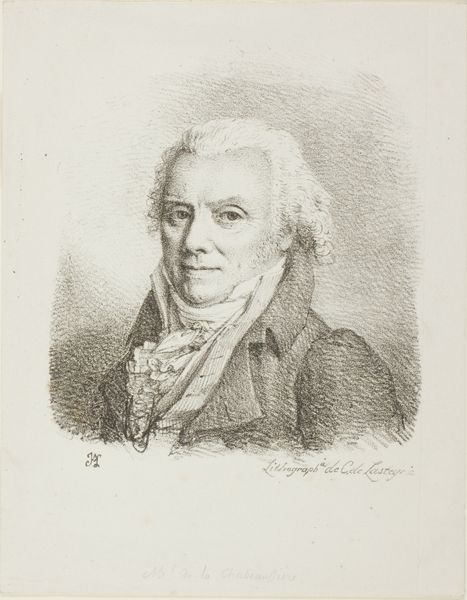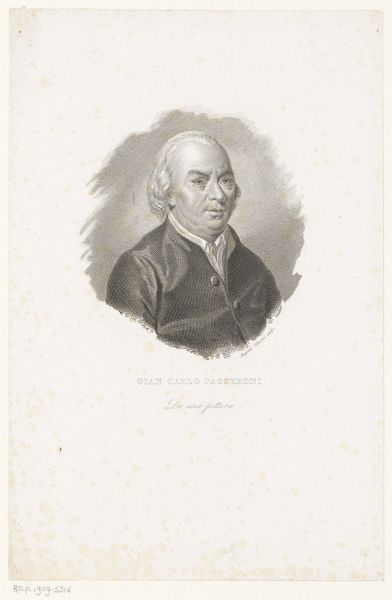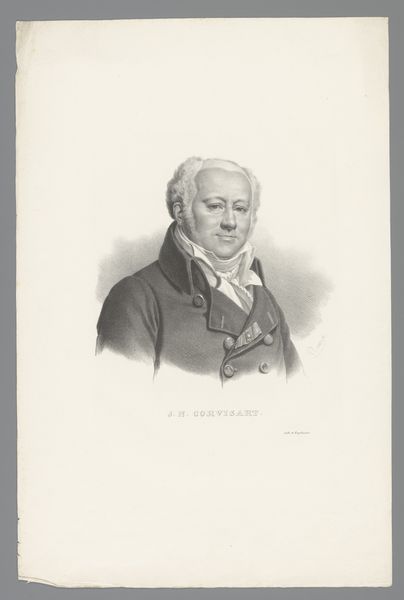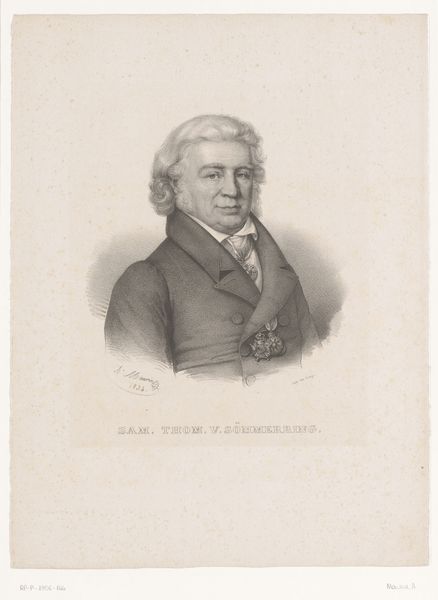
lithograph, print, engraving
#
portrait
#
neoclacissism
#
lithograph
# print
#
pencil drawing
#
engraving
Dimensions: 274 mm (height) x 201 mm (width) (bladmaal)
Curator: This rather severe-looking gentleman is a lithograph from between 1800 and 1831. It depicts H. C. F. Schumacher and it's currently housed at the SMK, the National Gallery of Denmark. Editor: My immediate impression is one of austere formality, typical of the Neoclassical period I presume. The stark contrast in light and shadow flattens the figure, and makes the work come across as very…controlled. Curator: Absolutely. It's an interesting example of the Neoclassical aesthetic applied to portraiture, especially through printmaking. The linear precision achieved through lithography contributes significantly. I notice the almost academic exactness in rendering his features, his gaze direct and unflinching. What I find striking is the way the engraver uses hatching and cross-hatching. Editor: I agree. It’s almost photographic, and it highlights the emphasis of this period on rational observation. But it's also interesting to note what is communicated by depicting a medical professor of the time. I'm most fascinated by the decorations that he is wearing – that cross – certainly speaks volumes of his position within society. What do we know about his cultural environment that we can connect with in this image? Curator: The man himself, H. C. F. Schumacher, was a prominent figure, professor of anatomy at the University of Copenhagen. I can sense a degree of social realism peeking through, despite the overarching formality. Notice, for example, that his mouth looks uneven – something almost human amidst the perfect symmetrical features. Editor: Good point. Considering this lithograph probably had a broad distribution as a form of accessible portraiture, what message was meant to be broadcast about those in positions of academic power, or even their moral standing? Curator: A relevant point. The artwork subtly reminds us how deeply ingrained ideals of rationality were within scientific communities. I take away that even the human element cannot quite escape the rigorous demands of such roles. Editor: And I will remember it for what it tells us about how 19th-century Danish society constructed and regarded its elite members. A moment captured that, regardless of technique or composition, provides unique cultural insights.
Comments
No comments
Be the first to comment and join the conversation on the ultimate creative platform.
